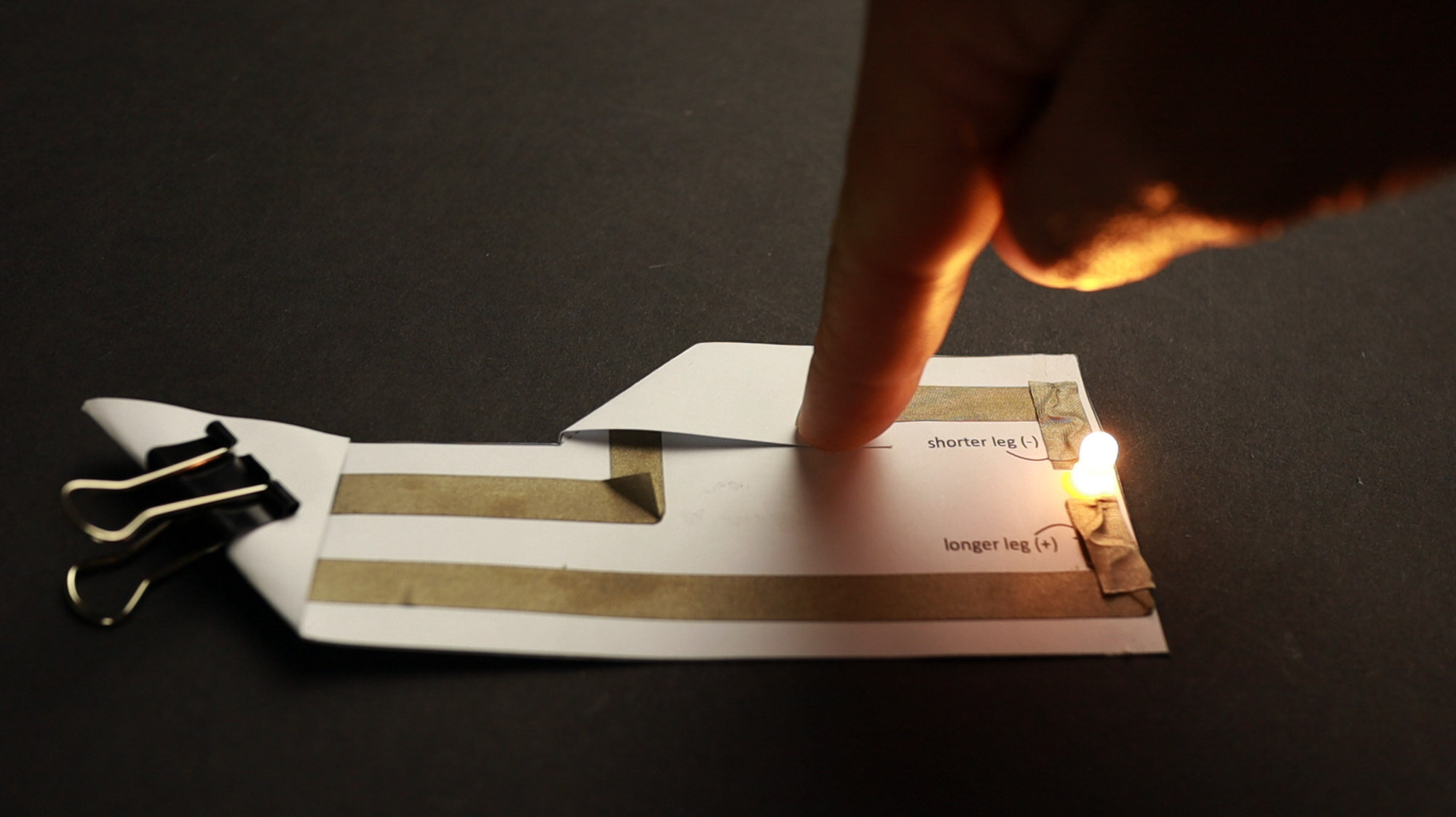
Full Guide to Paper Circuits
Easy Circuit Tutorial
Download Easy Circuit TEmplate
This easy circuit is the perfect starting point for kids to explore electronic components. Kids will build a battery holder, a switch, and a slot that holds a LED. The LED can be exchanged with a solar motor or a buzzer. You can use velostat in between the switch to have a pressure sensor instead of an on/off switch.
Step 1: Trace the circuit with conductive tape.
Important: Leave a small gap where the LED will go. This will "force" the current to flow through the LED.
Step 2: Attach the LED legs to the circuit using strips of conductive tape. Make sure the LED has the correct orientation.
Important: LED legs should be placed on top of the conductive tape from step 1.
Step 3: Fold the flap over the battery and secure it with a paper clip.
Important: The negative pole of the battery must be facing down.
Step4: Fold on/off switch over and try out your circuit.
If your LED does not light up
Try turning the battery (or LED) around.
Make sure there is a gap in the circuit under the LED.
Check if there is a short circuit directly at the battery (conductive tape bridging the black ring).
If your LED is always on
Make sure there is a gap where the on/off switch folds over.
Paper Circuit Electronics
Components I use
If you want to know more about the components I use, refer to my Order Electronics page.
Note: All my downloads include a shopping guide to make it easy for you to order the exact components I use.
Paper Circuit Safety
Last but not least, a word about safety. For all my paper circuits I use these little button cells (CR2032). These batteries are a choking hazard for small children. Some projects use up to four of them. The CR2032 is very low energy, making it the safest option for making paper circuits. I have never had any problems with my paper circuits, even when I have deliberately short-circuited these batteries. However, all my recommendations are based on my personal experience. I am not an electrical engineer. Use my work at your own risk.





